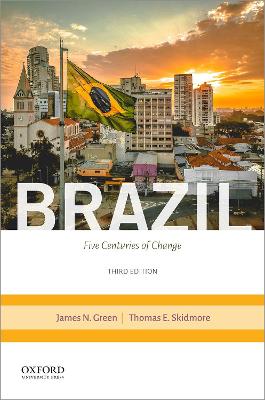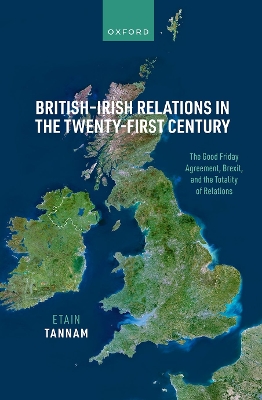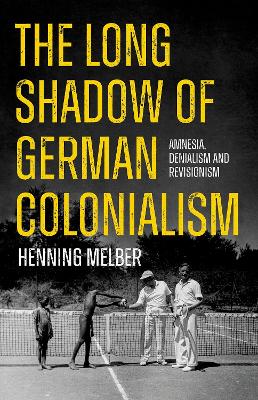Brazil
 -10%
portes grátis
-10%
portes grátis
Brazil
Five Centuries of Change
Green, James; Skidmore, Thomas E.
Oxford University Press Inc
09/2021
384
Mole
Inglês
9780190068981
15 a 20 dias
486
Descrição não disponível.
List of Exhibits and Images
Preface
Introduction Why Read a History of Brazil?
Chapter 1 The Making of Colonial Brazil, 1500-1694
The First Occupants of the Land
Everyday Life, War, and Rituals
Portuguese Overseas Expansion
Early Consolidation of the Portuguese Monarchy
Setting up a Global Trading Network
The Portuguese Encounter Land to the West
First European Impressions
Portuguese Land Claims
Brazilwood and Indigenous Slavery
Go-betweens
Imperial Reorganization
French Claims
The Sugar Industry
Enslaved Africans
Resistance to Slavery
Unification of Spain and Portugal
Dutch Occupation of the Northeast
Emergence of the Myth of the Bandeirante
Imperial Control
Gold
Chapter 2 A New Colonial Order, 1695-1821
Manumission of slaves
Religious Orders
Conflicts in the Mining Region
Tensions in the Northeast
Pombaline Reforms
Indigenous Resistance
The Influence of Enlightenment Ideas
The Mineira Conspiracy
Tailors' Revolt in Salvador
The Portuguese Court Comes to Brazil
Creating a New Portuguese America
Indigenous Resistance
Pernambuco Revolution, 1817
A Portuguese Revolt and its Impact on Brazil
Chapter 3 Independent Brazil and the Consolidation of a Nation, 1822-1850
Brazilian Hierarchies
A Constitution
The Emperor's Tribulations
The Regency
Regional Revolts
Recentralization
Pedro II as Emperor
The Rise of Coffee
Land Ownership
Growing Challenges to Slavery
Chapter 4 Late Imperial Brazil, 1851-1889
Gradually Ending Slavery
The Emperor and His Pedestal
The Paraguayan War
The Effects of the War
The Viscount of Maua
The Great Drought and the Amazon Rubber Boom
New Roles for Middle-class Women
Positivism, Republicanism, and the Military Question
The Move toward Abolition
Immigration
The End of the Empire
Chapter 5 Republican Brazil, 1889-1929
Modernizing Brazil"
Whitening Brazil
The Reality behind the Facade
Indigenous Brazil
Coffee Price Fluctuations and Emerging Industry
The Roots of Industrialization
Worker Organization and Employers' Strategy
Evaporation of the Oligarchical Consensus
A Message from Below
Economic Strains
The Shock of World War I
The Economy after the War
Brazil's Uneven Development
Rebellion in the Army
The Modern Woman and an Emerging Feminist Movement
Modernism, Brazilian Style
Rise of Anti-Liberal Thought
The Disintegration of the Old Politics
The Revolution of 1930
Chapter 6 Getulio Vargas in Power, 1930-45
Swing toward Centralization
Electoral rights
Ideological Polarization
Getulio Vargas as Dictator
The Vargas Style
Corporatist Inroads
A New Search for National Identity
Juggling the International Options
World War II and the Rise of U.S. Influence
Brazil and the War Effort
Collapse of the Dictatorship at Home
Chapter 7 Experiments in Democracy, 1946-64
The 1945 Election and the Dutra Period
Vargas Returns
From Oligarch to Populist
Vargas's Legislative Program Runs into Trouble
Vargas's Demise
Suicide
Population Growth, Regional Disequilibria, and Migration
A New President, Juscelino Kubitschek, Elected
Political Strategy
The Economic Development Program
A New Capital
Dealing with the World Economy
The Brief Presidency of Janio Quadros
The Succession of Joao Goulart
Populists versus the Military
Brazilian Culture
The National Union of Students
The Economic Crisis Escalates
Chapter 8 Rule of the Military, 1964-1985
The Generals in Power
Growing Repression, Growing Opposition
Strengthening the Military Regime
Indigenous Policy under Military Rule
Growing Opposition
Crackdown
The Economic Miracle
Hyper-Nationalism
The Arrival of the Guerrillas
Cultural Resistance
Mass Media during the Dictatorship
The Use of Torture
Exile
An Economic Turn for the Worse
The Winners and Losers
The Road to Redemocratization
Manipulating the Electoral System and Continued Repression
New Social Movements
The Working Class Takes Center Stage
The Last General
Chapter 9 The Return to Democracy, 1985-1994
An Unintended Succession
Sarney and the New Democracy
The Cruzado Plan
The Debt Crisis and the Economy
Lost Investment and a Brain Drain
Widening Gaps between Rich and Poor
Education and Medical Care
Roads and Communications
Public Health: A Success Story
Changes Affecting Women
Race Relations
The Political Spectrum in the New Democracy
The Left
The Right
The Center
The Armed Forces
Presidential Elections
New Policies
The End
Another Vice President in Command
Back to Stabilization: The Plano Real
The Presidential Election of 1994
Chapter 10 Consolidating Democracy, 1994-2006
The Cardoso Government's First Term
More Economic Problems
A Second Term in Office
Social Justice Delayed
On-going Challenges
The Presidential Race
Lula's Governmental Team
The PT in Power
Exports Take Center Stage
Poverty Alleviation and Education Enhancement
The PT Tastes Scandal
The Last Year of Lula's First Term
Prisons Riots
2006 Elections
Chapter 11 A Nation Polarized, 2006-present
Lula Reaches New Heights
Recognition Abroad
Continuity at Home
Presidenta in Power
The 2013 Protests
Operation Car Wash (Lava Jato)
A Fourth PT Term
A Conservative Tidal Wave
The Impeachment of Dilma Rousseff
Temer government
Lula Ensnared
The 2018 Election
The Past Returns
Suggestions for Further Reading
Film, History, Culture, and Society
Index
Preface
Introduction Why Read a History of Brazil?
Chapter 1 The Making of Colonial Brazil, 1500-1694
The First Occupants of the Land
Everyday Life, War, and Rituals
Portuguese Overseas Expansion
Early Consolidation of the Portuguese Monarchy
Setting up a Global Trading Network
The Portuguese Encounter Land to the West
First European Impressions
Portuguese Land Claims
Brazilwood and Indigenous Slavery
Go-betweens
Imperial Reorganization
French Claims
The Sugar Industry
Enslaved Africans
Resistance to Slavery
Unification of Spain and Portugal
Dutch Occupation of the Northeast
Emergence of the Myth of the Bandeirante
Imperial Control
Gold
Chapter 2 A New Colonial Order, 1695-1821
Manumission of slaves
Religious Orders
Conflicts in the Mining Region
Tensions in the Northeast
Pombaline Reforms
Indigenous Resistance
The Influence of Enlightenment Ideas
The Mineira Conspiracy
Tailors' Revolt in Salvador
The Portuguese Court Comes to Brazil
Creating a New Portuguese America
Indigenous Resistance
Pernambuco Revolution, 1817
A Portuguese Revolt and its Impact on Brazil
Chapter 3 Independent Brazil and the Consolidation of a Nation, 1822-1850
Brazilian Hierarchies
A Constitution
The Emperor's Tribulations
The Regency
Regional Revolts
Recentralization
Pedro II as Emperor
The Rise of Coffee
Land Ownership
Growing Challenges to Slavery
Chapter 4 Late Imperial Brazil, 1851-1889
Gradually Ending Slavery
The Emperor and His Pedestal
The Paraguayan War
The Effects of the War
The Viscount of Maua
The Great Drought and the Amazon Rubber Boom
New Roles for Middle-class Women
Positivism, Republicanism, and the Military Question
The Move toward Abolition
Immigration
The End of the Empire
Chapter 5 Republican Brazil, 1889-1929
Modernizing Brazil"
Whitening Brazil
The Reality behind the Facade
Indigenous Brazil
Coffee Price Fluctuations and Emerging Industry
The Roots of Industrialization
Worker Organization and Employers' Strategy
Evaporation of the Oligarchical Consensus
A Message from Below
Economic Strains
The Shock of World War I
The Economy after the War
Brazil's Uneven Development
Rebellion in the Army
The Modern Woman and an Emerging Feminist Movement
Modernism, Brazilian Style
Rise of Anti-Liberal Thought
The Disintegration of the Old Politics
The Revolution of 1930
Chapter 6 Getulio Vargas in Power, 1930-45
Swing toward Centralization
Electoral rights
Ideological Polarization
Getulio Vargas as Dictator
The Vargas Style
Corporatist Inroads
A New Search for National Identity
Juggling the International Options
World War II and the Rise of U.S. Influence
Brazil and the War Effort
Collapse of the Dictatorship at Home
Chapter 7 Experiments in Democracy, 1946-64
The 1945 Election and the Dutra Period
Vargas Returns
From Oligarch to Populist
Vargas's Legislative Program Runs into Trouble
Vargas's Demise
Suicide
Population Growth, Regional Disequilibria, and Migration
A New President, Juscelino Kubitschek, Elected
Political Strategy
The Economic Development Program
A New Capital
Dealing with the World Economy
The Brief Presidency of Janio Quadros
The Succession of Joao Goulart
Populists versus the Military
Brazilian Culture
The National Union of Students
The Economic Crisis Escalates
Chapter 8 Rule of the Military, 1964-1985
The Generals in Power
Growing Repression, Growing Opposition
Strengthening the Military Regime
Indigenous Policy under Military Rule
Growing Opposition
Crackdown
The Economic Miracle
Hyper-Nationalism
The Arrival of the Guerrillas
Cultural Resistance
Mass Media during the Dictatorship
The Use of Torture
Exile
An Economic Turn for the Worse
The Winners and Losers
The Road to Redemocratization
Manipulating the Electoral System and Continued Repression
New Social Movements
The Working Class Takes Center Stage
The Last General
Chapter 9 The Return to Democracy, 1985-1994
An Unintended Succession
Sarney and the New Democracy
The Cruzado Plan
The Debt Crisis and the Economy
Lost Investment and a Brain Drain
Widening Gaps between Rich and Poor
Education and Medical Care
Roads and Communications
Public Health: A Success Story
Changes Affecting Women
Race Relations
The Political Spectrum in the New Democracy
The Left
The Right
The Center
The Armed Forces
Presidential Elections
New Policies
The End
Another Vice President in Command
Back to Stabilization: The Plano Real
The Presidential Election of 1994
Chapter 10 Consolidating Democracy, 1994-2006
The Cardoso Government's First Term
More Economic Problems
A Second Term in Office
Social Justice Delayed
On-going Challenges
The Presidential Race
Lula's Governmental Team
The PT in Power
Exports Take Center Stage
Poverty Alleviation and Education Enhancement
The PT Tastes Scandal
The Last Year of Lula's First Term
Prisons Riots
2006 Elections
Chapter 11 A Nation Polarized, 2006-present
Lula Reaches New Heights
Recognition Abroad
Continuity at Home
Presidenta in Power
The 2013 Protests
Operation Car Wash (Lava Jato)
A Fourth PT Term
A Conservative Tidal Wave
The Impeachment of Dilma Rousseff
Temer government
Lula Ensnared
The 2018 Election
The Past Returns
Suggestions for Further Reading
Film, History, Culture, and Society
Index
Este título pertence ao(s) assunto(s) indicados(s). Para ver outros títulos clique no assunto desejado.
List of Exhibits and Images
Preface
Introduction Why Read a History of Brazil?
Chapter 1 The Making of Colonial Brazil, 1500-1694
The First Occupants of the Land
Everyday Life, War, and Rituals
Portuguese Overseas Expansion
Early Consolidation of the Portuguese Monarchy
Setting up a Global Trading Network
The Portuguese Encounter Land to the West
First European Impressions
Portuguese Land Claims
Brazilwood and Indigenous Slavery
Go-betweens
Imperial Reorganization
French Claims
The Sugar Industry
Enslaved Africans
Resistance to Slavery
Unification of Spain and Portugal
Dutch Occupation of the Northeast
Emergence of the Myth of the Bandeirante
Imperial Control
Gold
Chapter 2 A New Colonial Order, 1695-1821
Manumission of slaves
Religious Orders
Conflicts in the Mining Region
Tensions in the Northeast
Pombaline Reforms
Indigenous Resistance
The Influence of Enlightenment Ideas
The Mineira Conspiracy
Tailors' Revolt in Salvador
The Portuguese Court Comes to Brazil
Creating a New Portuguese America
Indigenous Resistance
Pernambuco Revolution, 1817
A Portuguese Revolt and its Impact on Brazil
Chapter 3 Independent Brazil and the Consolidation of a Nation, 1822-1850
Brazilian Hierarchies
A Constitution
The Emperor's Tribulations
The Regency
Regional Revolts
Recentralization
Pedro II as Emperor
The Rise of Coffee
Land Ownership
Growing Challenges to Slavery
Chapter 4 Late Imperial Brazil, 1851-1889
Gradually Ending Slavery
The Emperor and His Pedestal
The Paraguayan War
The Effects of the War
The Viscount of Maua
The Great Drought and the Amazon Rubber Boom
New Roles for Middle-class Women
Positivism, Republicanism, and the Military Question
The Move toward Abolition
Immigration
The End of the Empire
Chapter 5 Republican Brazil, 1889-1929
Modernizing Brazil"
Whitening Brazil
The Reality behind the Facade
Indigenous Brazil
Coffee Price Fluctuations and Emerging Industry
The Roots of Industrialization
Worker Organization and Employers' Strategy
Evaporation of the Oligarchical Consensus
A Message from Below
Economic Strains
The Shock of World War I
The Economy after the War
Brazil's Uneven Development
Rebellion in the Army
The Modern Woman and an Emerging Feminist Movement
Modernism, Brazilian Style
Rise of Anti-Liberal Thought
The Disintegration of the Old Politics
The Revolution of 1930
Chapter 6 Getulio Vargas in Power, 1930-45
Swing toward Centralization
Electoral rights
Ideological Polarization
Getulio Vargas as Dictator
The Vargas Style
Corporatist Inroads
A New Search for National Identity
Juggling the International Options
World War II and the Rise of U.S. Influence
Brazil and the War Effort
Collapse of the Dictatorship at Home
Chapter 7 Experiments in Democracy, 1946-64
The 1945 Election and the Dutra Period
Vargas Returns
From Oligarch to Populist
Vargas's Legislative Program Runs into Trouble
Vargas's Demise
Suicide
Population Growth, Regional Disequilibria, and Migration
A New President, Juscelino Kubitschek, Elected
Political Strategy
The Economic Development Program
A New Capital
Dealing with the World Economy
The Brief Presidency of Janio Quadros
The Succession of Joao Goulart
Populists versus the Military
Brazilian Culture
The National Union of Students
The Economic Crisis Escalates
Chapter 8 Rule of the Military, 1964-1985
The Generals in Power
Growing Repression, Growing Opposition
Strengthening the Military Regime
Indigenous Policy under Military Rule
Growing Opposition
Crackdown
The Economic Miracle
Hyper-Nationalism
The Arrival of the Guerrillas
Cultural Resistance
Mass Media during the Dictatorship
The Use of Torture
Exile
An Economic Turn for the Worse
The Winners and Losers
The Road to Redemocratization
Manipulating the Electoral System and Continued Repression
New Social Movements
The Working Class Takes Center Stage
The Last General
Chapter 9 The Return to Democracy, 1985-1994
An Unintended Succession
Sarney and the New Democracy
The Cruzado Plan
The Debt Crisis and the Economy
Lost Investment and a Brain Drain
Widening Gaps between Rich and Poor
Education and Medical Care
Roads and Communications
Public Health: A Success Story
Changes Affecting Women
Race Relations
The Political Spectrum in the New Democracy
The Left
The Right
The Center
The Armed Forces
Presidential Elections
New Policies
The End
Another Vice President in Command
Back to Stabilization: The Plano Real
The Presidential Election of 1994
Chapter 10 Consolidating Democracy, 1994-2006
The Cardoso Government's First Term
More Economic Problems
A Second Term in Office
Social Justice Delayed
On-going Challenges
The Presidential Race
Lula's Governmental Team
The PT in Power
Exports Take Center Stage
Poverty Alleviation and Education Enhancement
The PT Tastes Scandal
The Last Year of Lula's First Term
Prisons Riots
2006 Elections
Chapter 11 A Nation Polarized, 2006-present
Lula Reaches New Heights
Recognition Abroad
Continuity at Home
Presidenta in Power
The 2013 Protests
Operation Car Wash (Lava Jato)
A Fourth PT Term
A Conservative Tidal Wave
The Impeachment of Dilma Rousseff
Temer government
Lula Ensnared
The 2018 Election
The Past Returns
Suggestions for Further Reading
Film, History, Culture, and Society
Index
Preface
Introduction Why Read a History of Brazil?
Chapter 1 The Making of Colonial Brazil, 1500-1694
The First Occupants of the Land
Everyday Life, War, and Rituals
Portuguese Overseas Expansion
Early Consolidation of the Portuguese Monarchy
Setting up a Global Trading Network
The Portuguese Encounter Land to the West
First European Impressions
Portuguese Land Claims
Brazilwood and Indigenous Slavery
Go-betweens
Imperial Reorganization
French Claims
The Sugar Industry
Enslaved Africans
Resistance to Slavery
Unification of Spain and Portugal
Dutch Occupation of the Northeast
Emergence of the Myth of the Bandeirante
Imperial Control
Gold
Chapter 2 A New Colonial Order, 1695-1821
Manumission of slaves
Religious Orders
Conflicts in the Mining Region
Tensions in the Northeast
Pombaline Reforms
Indigenous Resistance
The Influence of Enlightenment Ideas
The Mineira Conspiracy
Tailors' Revolt in Salvador
The Portuguese Court Comes to Brazil
Creating a New Portuguese America
Indigenous Resistance
Pernambuco Revolution, 1817
A Portuguese Revolt and its Impact on Brazil
Chapter 3 Independent Brazil and the Consolidation of a Nation, 1822-1850
Brazilian Hierarchies
A Constitution
The Emperor's Tribulations
The Regency
Regional Revolts
Recentralization
Pedro II as Emperor
The Rise of Coffee
Land Ownership
Growing Challenges to Slavery
Chapter 4 Late Imperial Brazil, 1851-1889
Gradually Ending Slavery
The Emperor and His Pedestal
The Paraguayan War
The Effects of the War
The Viscount of Maua
The Great Drought and the Amazon Rubber Boom
New Roles for Middle-class Women
Positivism, Republicanism, and the Military Question
The Move toward Abolition
Immigration
The End of the Empire
Chapter 5 Republican Brazil, 1889-1929
Modernizing Brazil"
Whitening Brazil
The Reality behind the Facade
Indigenous Brazil
Coffee Price Fluctuations and Emerging Industry
The Roots of Industrialization
Worker Organization and Employers' Strategy
Evaporation of the Oligarchical Consensus
A Message from Below
Economic Strains
The Shock of World War I
The Economy after the War
Brazil's Uneven Development
Rebellion in the Army
The Modern Woman and an Emerging Feminist Movement
Modernism, Brazilian Style
Rise of Anti-Liberal Thought
The Disintegration of the Old Politics
The Revolution of 1930
Chapter 6 Getulio Vargas in Power, 1930-45
Swing toward Centralization
Electoral rights
Ideological Polarization
Getulio Vargas as Dictator
The Vargas Style
Corporatist Inroads
A New Search for National Identity
Juggling the International Options
World War II and the Rise of U.S. Influence
Brazil and the War Effort
Collapse of the Dictatorship at Home
Chapter 7 Experiments in Democracy, 1946-64
The 1945 Election and the Dutra Period
Vargas Returns
From Oligarch to Populist
Vargas's Legislative Program Runs into Trouble
Vargas's Demise
Suicide
Population Growth, Regional Disequilibria, and Migration
A New President, Juscelino Kubitschek, Elected
Political Strategy
The Economic Development Program
A New Capital
Dealing with the World Economy
The Brief Presidency of Janio Quadros
The Succession of Joao Goulart
Populists versus the Military
Brazilian Culture
The National Union of Students
The Economic Crisis Escalates
Chapter 8 Rule of the Military, 1964-1985
The Generals in Power
Growing Repression, Growing Opposition
Strengthening the Military Regime
Indigenous Policy under Military Rule
Growing Opposition
Crackdown
The Economic Miracle
Hyper-Nationalism
The Arrival of the Guerrillas
Cultural Resistance
Mass Media during the Dictatorship
The Use of Torture
Exile
An Economic Turn for the Worse
The Winners and Losers
The Road to Redemocratization
Manipulating the Electoral System and Continued Repression
New Social Movements
The Working Class Takes Center Stage
The Last General
Chapter 9 The Return to Democracy, 1985-1994
An Unintended Succession
Sarney and the New Democracy
The Cruzado Plan
The Debt Crisis and the Economy
Lost Investment and a Brain Drain
Widening Gaps between Rich and Poor
Education and Medical Care
Roads and Communications
Public Health: A Success Story
Changes Affecting Women
Race Relations
The Political Spectrum in the New Democracy
The Left
The Right
The Center
The Armed Forces
Presidential Elections
New Policies
The End
Another Vice President in Command
Back to Stabilization: The Plano Real
The Presidential Election of 1994
Chapter 10 Consolidating Democracy, 1994-2006
The Cardoso Government's First Term
More Economic Problems
A Second Term in Office
Social Justice Delayed
On-going Challenges
The Presidential Race
Lula's Governmental Team
The PT in Power
Exports Take Center Stage
Poverty Alleviation and Education Enhancement
The PT Tastes Scandal
The Last Year of Lula's First Term
Prisons Riots
2006 Elections
Chapter 11 A Nation Polarized, 2006-present
Lula Reaches New Heights
Recognition Abroad
Continuity at Home
Presidenta in Power
The 2013 Protests
Operation Car Wash (Lava Jato)
A Fourth PT Term
A Conservative Tidal Wave
The Impeachment of Dilma Rousseff
Temer government
Lula Ensnared
The 2018 Election
The Past Returns
Suggestions for Further Reading
Film, History, Culture, and Society
Index
Este título pertence ao(s) assunto(s) indicados(s). Para ver outros títulos clique no assunto desejado.







